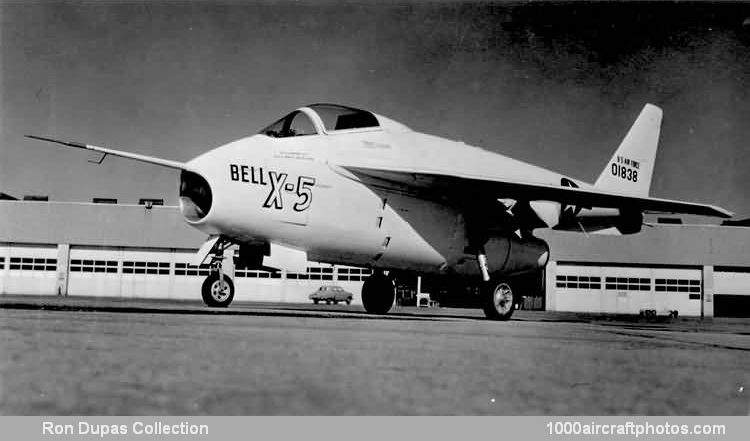01/28/2015. Remarks by Johan Visschedijk: "The X-5 was a single-seat research monoplane which was used by the USAF and NACA to investigate the aerodynamic effects of changing the degree of wing sweepback during flight. Powered by a 4,900 lb (2,223 kg) Allison J-35-A-17 turbojet engine, the first, s/n 50-1838, was first flown on June 20, 1951 and followed by the second, s/n 50-1839, on December 10, 1951.
The wings had variable sweepback from 20º to 60º, the operating mechanism simultaneously compensated for the resultant shift of the center of gravity. Each wing root had a specially designed fairing to ensure that the root leading edge presented a smooth airfoil surface regardless of the angle of sweepback. Full-span leading edge slats were fitted. Hydraulically-operated dive brakes were located in the sides of the fuselage forward of the cockpit, and the aircraft had a fully retractable tricycle landing gear.
50-1839 was lost at Edwards AFB, California, on 14 October 1953, when it failed to recover from a spin at 60° sweepback, killing. USAF Captain Ray Popson. 50-1838 remained in active service until 1955, and was presented to the Air Force Museum in 1958."
